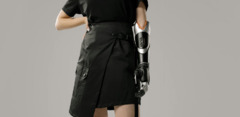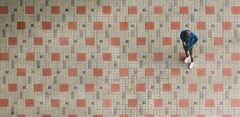Many new year's eve traditions exist, ranging from swinging fire balls, to singing auld Lang syne, to cross-over services in church, and so on. Different cultures and countries have different practices to wrap up the year.
New Year's Eve UK Traditions
Staying up on New year's Eeve is a common practice in the world. In the UK particularly, it's all funfair and glamour - the parties, people out eating and drinking liquor, the singing, fireworks, dancing etc. With the 2020 we've had, the exit of this year would definitely be memorable, even though not so much, as restrictions are still up in many places.
Typical new year's eve tradition in the UK include opening the door to let the old year out and allow the new one in; getting someone to kiss once the clock strikes midnight; for many it is crossing arms and linking hands to sing a song which feels as old as time: Auld Lang Syne. This is an old Scottish song popularly accredited to Rovert Burns for his transcription, and is a song that reminds people of old and new friendships.
Scottish New Year's Traditions
In Scotland, there's a common tradition of “first-footing” where the first person who enters a home in the new year must come bearing gifts for luck. There's also the Hogmanay celebration filled with parades and large fireballs on poles to represent the sun and cleanse the new year.
Also, once January starts, people stay back and await the arrival of a dark haired person, who usually comes bearing coal, some bread, some money and some greenery. These gifts all represent different things: coal for warmth all through the year, bread for abundance of food, money for abundance of that, and greenery for long life. After which the visitor would leave with dust or ashes marking the end of the old year.
Irish New Year's Traditions
New year's Eve is celebrated here with parties and massive fireworks, usually accompanied by live music and parades.
Calennig
There's also the Welsh tradition of children waking up early on New year's (Dydd Calan) to visit neighbours with apples still having twigs, with cloves and evergreens stuck in it as a symbol of growth and prosperity. They also sing songs, and are often rewarded with sweets, and coins, also known as calennig. Calennig stands for new year gift, and this can be placed on a window sill or even shelf, and is believed to bring good luck. However, you mustn't borrow the money used in paying the children, as it's believed that if you start the year with a debt, you'll spend the entire year in debt.
Other New Year's Traditions
Cake on a Cow
A tradition involving farmers and their cows. It requires the farmer to sing and dance around the vow, then place a cake on its horns. The direction to which the cake falls determines what fortune begets the farmer. If forward, then goodluck, and if backwards, then terrible luck is incoming.
Throwing Bread
This is a popular Irish tradition and us used to send evil spirits packing, and usher in good luck. It involves people taking whatever is left of the Christmas bread and throwing it against the walls.
Allendale Tar Barl Festival
This is held in Northumberland on December 31st. The practice is for whiskey barrels to be filled with burning tar, kindling and sawdust, this is then paraded through town on the heads of Guisers- flame-retardant people who carry the barrels.
New Year's Symbols
Several symbols exist for new year's, and a few are:
The clock (Big Ben) - thousands of people gather in Trafalgar Square to celebrate.
In Scotland, fire is a symbol for purity.
The yule log stands for triumph over darkness, and usually burns for one whole night. It then smothers for 12 days after, representing the months of the year.
Father Time: a white bearded elderly man representing time, and passes the baton of time over, during the new year.
Baby new year: the infant who receives the baton from Father Time, with both of them symbolizing death and birth.
Candles represent everlasting, and also the hope that prayers would be received and answered by God as the smoke reaches the heavens. They are also a symbol of warmth and good cheer. Some even see New Year as a religious day.
Roman God Janus: the month January is named after the Roman God, Janus. He's known to be 2-faced, with it believed to represent the ability to see into both the old and new years.
Different food items serve as symbols too: Noodles, when eaten whole are thought to bring long life; Rice on new year's is thought to bring fertility and wealth.






